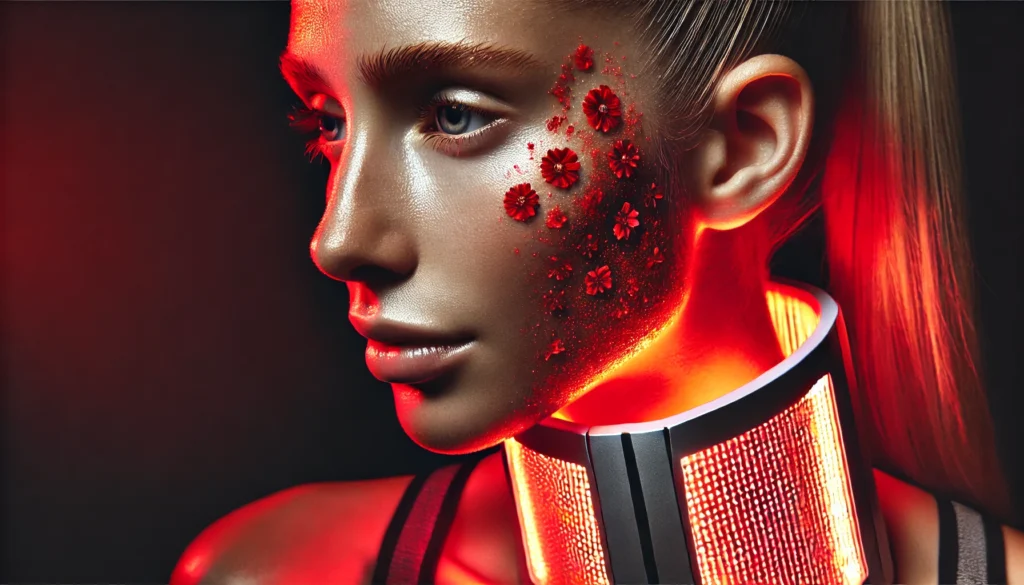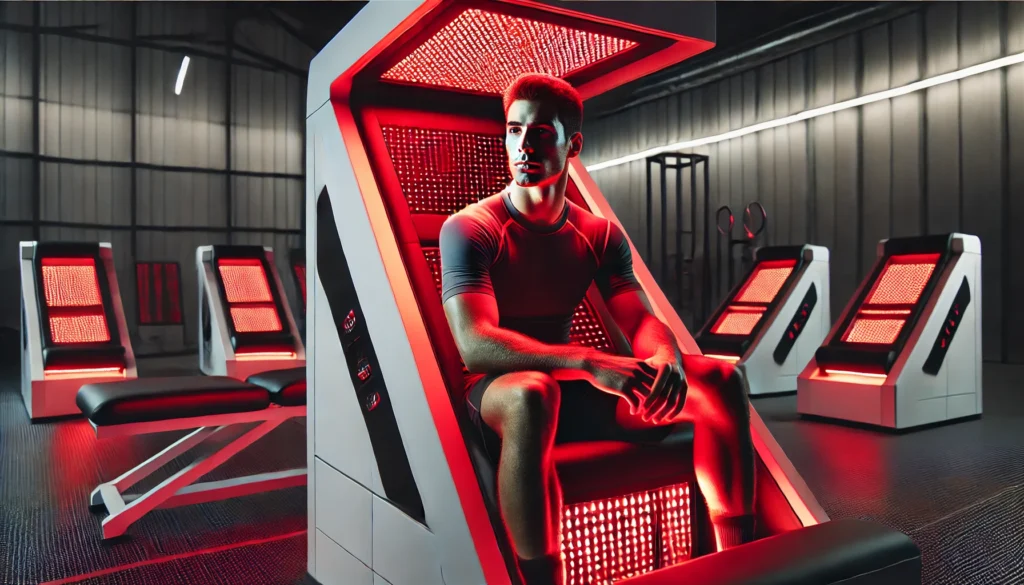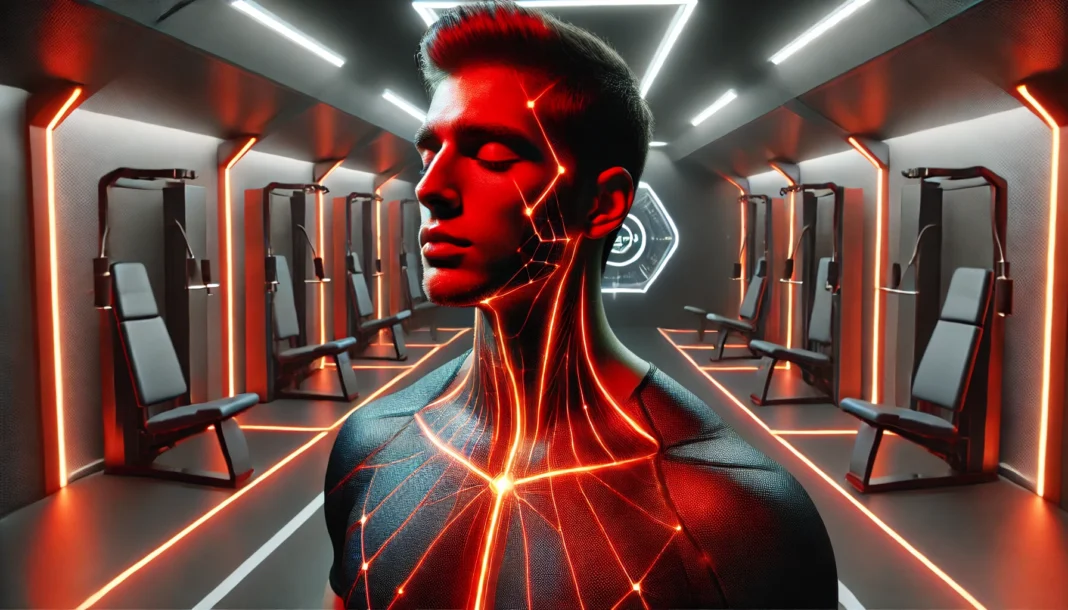The Science Behind Red Light Therapy and Athletic Recovery
Athletes continually seek innovative ways to enhance recovery and performance. One such breakthrough is red light therapy, which has garnered attention for its ability to accelerate tissue repair, reduce inflammation, and improve circulation. This non-invasive treatment utilizes specific wavelengths of red and near-infrared light to penetrate the skin, stimulating cellular activity. Scientific studies indicate that red light therapy boosts mitochondrial function, leading to increased adenosine triphosphate (ATP) production, which fuels cellular repair and regeneration. For athletes, this means reduced recovery time, decreased muscle soreness, and improved overall performance.
You may also like: Red Light Therapy for Muscle Recovery: How Athletes Can Speed Healing and Enhance Performance
Red light therapy has been widely studied for its effects on musculoskeletal health. Research demonstrates its ability to enhance muscle recovery post-exercise, making it an excellent addition to any athlete’s recovery regimen. The technology works by increasing blood flow, allowing oxygen and essential nutrients to reach tired muscles more efficiently. The increased circulation also facilitates the removal of metabolic waste products like lactic acid, which contribute to soreness and stiffness after intense physical activity. These physiological benefits make red light therapy an essential tool for optimizing post-workout recovery.
Why Focus on the Face and Neck?
While red light therapy is commonly used for full-body recovery, its application to the face and neck is particularly significant. These areas house critical blood vessels and lymph nodes that influence overall circulation and immune function. Additionally, the muscles in the neck and jaw often experience tension and fatigue due to strenuous physical activity. The application of an infrared facial device to these regions can help release tension, improve blood flow, and reduce inflammation, ultimately supporting systemic recovery.
The face and neck also play crucial roles in respiratory function, with the muscles surrounding the airways influencing breathing efficiency. Athletes, especially those in endurance sports, require optimal respiratory function for peak performance. Red light therapy in these areas may help reduce inflammation in the airways, potentially improving oxygen uptake and endurance. The localized benefits extend beyond aesthetics, contributing to holistic athletic recovery and performance enhancement.
How Red Light Therapy Enhances Muscle Recovery
Recovery is a fundamental component of athletic success, and red light therapy offers a scientifically backed method to expedite the process. The primary mechanism behind red light therapy’s effectiveness lies in its ability to reduce oxidative stress. Exercise-induced muscle damage often results in inflammation and delayed onset muscle soreness (DOMS). By delivering targeted red light for face and neck, athletes can mitigate these effects and return to training more quickly.
Clinical studies have shown that red light therapy improves muscle repair by reducing pro-inflammatory cytokines while increasing anti-inflammatory proteins. This shift in the inflammatory response allows muscles to heal faster and more efficiently. Furthermore, red light therapy stimulates collagen production, an essential protein for maintaining muscle integrity and preventing injuries. Regular use can lead to stronger, more resilient muscles capable of withstanding greater physical stress.
The Role of Red Light Therapy in Skin Tightening and Recovery
Beyond muscle recovery, red light therapy is renowned for its skin rejuvenation properties. Athletes often experience environmental stressors such as sun exposure, sweat buildup, and physical exertion, which can take a toll on their skin. Using the best red light for skin tightening not only promotes collagen synthesis but also aids in reducing fine lines, wrinkles, and skin laxity. The increased blood circulation induced by red light therapy ensures that skin cells receive adequate oxygen and nutrients, supporting a youthful and healthy complexion.
The skin on the face and neck is particularly sensitive to external stressors, making it prone to premature aging. Red light therapy can combat these effects by enhancing cellular turnover and strengthening the skin barrier. Athletes who train outdoors can benefit significantly from this aspect, as it helps counteract the damage caused by UV radiation and environmental pollutants. Regular use of an infrared face lamp can provide consistent skin-enhancing benefits, making it a valuable addition to any recovery routine.

Best Practices for Using Red Light Therapy in Athletic Recovery
To maximize the benefits of red light therapy, athletes should incorporate it into their daily recovery protocols. The recommended exposure time varies depending on the device, but most studies suggest sessions ranging from 10 to 20 minutes per targeted area. Consistency is key, as cumulative exposure yields the best results. Using the best red light therapy for face and neck consistently can significantly improve both recovery and performance over time.
Proper device selection is also crucial. Athletes should opt for high-quality devices that emit wavelengths in the optimal therapeutic range, typically between 600nm and 850nm. These wavelengths penetrate the skin effectively, reaching the deeper tissues where recovery mechanisms are activated. Portable, easy-to-use devices make it convenient for athletes to incorporate red light therapy into their routines, whether at home or on the go.
Frequently Asked Questions (FAQ) on Red Light Therapy for Athletic Recovery
1. How does red light therapy specifically aid in athletic recovery?
Red light therapy aids athletic recovery by penetrating deep into muscle tissue, accelerating cell regeneration, and reducing inflammation. Unlike traditional recovery methods such as ice baths or stretching, red light therapy enhances mitochondrial function, allowing muscles to repair at a cellular level. By using an infrared face lamp on key areas like the face and neck, athletes can experience improved circulation, which supports oxygen transport to fatigued muscles. Additionally, red light therapy reduces oxidative stress, a major contributor to muscle soreness and delayed recovery. This allows for a quicker return to peak performance with less downtime between workouts.
2. Why is targeting the face and neck important in athletic recovery?
The face and neck contain vital lymph nodes and blood vessels that influence overall circulation and immune response. When exposed to red light for face and neck, these areas experience increased blood flow, which helps distribute essential nutrients and oxygen throughout the body. Additionally, red light therapy can relieve tension in the jaw and neck muscles, areas that often tighten due to physical exertion or stress. Since athletes rely on optimal respiratory function, applying red light therapy to the neck may also enhance airway relaxation, leading to improved oxygen intake. This holistic approach aids in overall athletic performance by supporting systemic recovery beyond just muscle repair.
3. What makes red light therapy different from other recovery techniques?
Unlike methods such as massage therapy or cold compression, red light therapy works at a cellular level to promote tissue regeneration without direct manipulation. Traditional recovery methods often focus on symptom relief, whereas the best red light therapy for face and neck addresses the root causes of muscle fatigue and inflammation. The therapy stimulates collagen production, which aids in tissue repair and reduces the risk of long-term injuries. It also offers a non-invasive alternative to treatments like deep tissue therapy, which can sometimes be uncomfortable. Because of its ability to penetrate deep into muscle fibers, red light therapy provides long-term benefits, enhancing endurance and reducing the likelihood of chronic pain.
4. Can red light therapy be used before workouts to enhance performance?
Yes, using an infrared facial device before exercise can enhance circulation, oxygen delivery, and tissue elasticity, priming the body for optimal performance. Studies suggest that pre-workout red light therapy helps muscles contract more efficiently, reducing the risk of strains and improving endurance. When applied to the face and neck, it can also stimulate neurological pathways that support focus and mental clarity during exercise. This pre-activation of the muscles can lead to improved range of motion, allowing for a more effective workout session. Athletes looking to optimize performance should consider incorporating red light therapy as part of their warm-up routine.
5. How often should athletes use red light therapy for optimal results?
Athletes should use the best red light for skin tightening and recovery at least three to five times per week for maximum benefit. Sessions typically last between 10 to 20 minutes per treatment area, ensuring enough light exposure to activate cellular regeneration. Consistency is key, as the cumulative effects of red light therapy lead to progressive improvements in muscle recovery and skin health. Those recovering from intense training sessions may benefit from daily use, especially when targeting areas prone to soreness. Over time, regular exposure enhances not only short-term recovery but also long-term muscle resilience and skin elasticity.

6. Is there a difference between red and infrared light in recovery treatments?
Yes, red and infrared light serve distinct but complementary purposes in athletic recovery. Red light, typically in the 600–700nm range, primarily benefits the skin and superficial muscle tissues, making it ideal for applications like an infrared face lamp targeting the face and neck. Infrared light, which operates at deeper wavelengths (700–850nm), penetrates further into muscle tissues and joints, accelerating deep tissue repair. For athletes, a combination of both wavelengths ensures full-spectrum recovery, addressing both surface-level rejuvenation and deeper muscle repair. The dual action of red and infrared light optimizes both aesthetics and performance, making it a powerful tool in an athlete’s recovery toolkit.
7. Can red light therapy improve sleep and recovery quality?
Yes, regular use of red light for face and neck has been linked to improved sleep quality, which is critical for effective recovery. Exposure to red light therapy in the evening helps regulate melatonin production, the hormone responsible for sleep cycles. Improved sleep allows muscles to recover more efficiently, reducing fatigue and enhancing overall athletic performance. Additionally, using red light therapy on the face and neck relaxes tension in the nervous system, promoting a sense of calm before bedtime. Athletes who struggle with disrupted sleep due to rigorous training schedules may find red light therapy beneficial for establishing healthier rest patterns.
8. How does red light therapy impact skin health for athletes?
Athletes frequently face skin damage from sun exposure, sweat buildup, and environmental pollutants. Utilizing the best red light therapy for face and neck supports collagen production, reducing fine lines, wrinkles, and skin irritation. The therapy also accelerates wound healing, making it effective for treating minor abrasions or skin inflammation caused by intense workouts. Furthermore, red light therapy enhances hydration retention in the skin, preventing dryness and irritation common among outdoor athletes. By integrating red light therapy into their routine, athletes can maintain not only peak physical performance but also healthier, more resilient skin.
9. Are there any risks or side effects associated with red light therapy?
Red light therapy is considered safe, with minimal risks when used correctly. However, overuse can lead to temporary skin sensitivity, particularly for those with pre-existing conditions such as rosacea. Athletes using an infrared facial device should ensure that their chosen device meets safety standards and is used according to manufacturer recommendations. Some individuals may experience mild warmth or tingling during treatment, but these sensations are typically temporary. Ensuring proper hydration and avoiding excessive exposure can help prevent any potential discomfort. Overall, red light therapy remains a non-invasive, low-risk recovery tool with significant benefits for athletes.
10. What should athletes look for when choosing a red light therapy device?
Selecting the best red light for skin tightening and recovery involves considering wavelength, power output, and treatment area coverage. Athletes should look for devices that emit red and near-infrared light within the optimal therapeutic range of 600-850nm. Portable and hands-free devices are particularly convenient for targeting specific areas such as the face and neck. Additionally, ensuring FDA approval and safety certifications can provide confidence in the device’s effectiveness and reliability. Investing in a high-quality red light therapy device ensures consistent and long-lasting benefits for athletic recovery and performance enhancement.

Conclusion: Integrating Red Light Therapy for Optimal Recovery
Athletes seeking a competitive edge should not overlook the benefits of red light therapy. From accelerating muscle recovery to enhancing skin health and circulation, this non-invasive treatment offers a comprehensive approach to post-exercise regeneration. The application of red light for face and neck is particularly beneficial due to the critical role these areas play in overall systemic function. By incorporating an infrared facial device into their recovery routines, athletes can experience reduced inflammation, improved tissue repair, and enhanced skin resilience.
Red light therapy is a cutting-edge addition to modern athletic recovery strategies, offering scientifically backed advantages that align with the demands of high-performance training. Whether used as a standalone treatment or combined with other recovery modalities, its benefits extend beyond aesthetics, fostering a holistic approach to physical well-being. As more research continues to support its efficacy, red light therapy is poised to become an indispensable tool for athletes striving to achieve their peak potential.
red light therapy, infrared facial device, best red light for skin tightening, infrared face lamp, red light for face and neck, best red light therapy for face and neck, athletic recovery, sports performance, muscle recovery, skin rejuvenation, collagen production, infrared light therapy, post-workout recovery, deep tissue repair, inflammation reduction, circulation improvement, mitochondrial function, endurance training, workout recovery, sports science
Further Reading:
Unlock Athletic Greatness with Red Light Therapy: Boost Performance and Recovery
Targeted Red Light Therapy for Muscle Recovery
Athletic Performance and Muscle Recovery Benefits of Red Light Therapy
Disclaimer
The information contained in this article is provided for general informational purposes only and is not intended to serve as medical, legal, or professional advice. While NewsHealthWatch strives to present accurate, up-to-date, and reliable content, no warranty or guarantee, expressed or implied, is made regarding the completeness, accuracy, or adequacy of the information provided. Readers are strongly advised to seek the guidance of a qualified healthcare provider or other relevant professionals before acting on any information contained in this article. NewsHealthWatch, its authors, editors, and contributors expressly disclaim any liability for any damages, losses, or consequences arising directly or indirectly from the use, interpretation, or reliance on any information presented herein. The views and opinions expressed in this article are those of the author(s) and do not necessarily reflect the official policies or positions of NewsHealthWatch.

